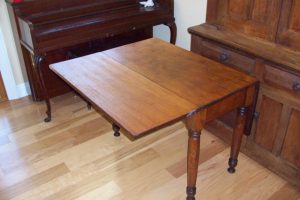
Polish, Oil or Wax
 Inexpensive spray-on polish and oils, “time savers”, give your wood a short-term shine within a few minutes, but that is where it stops. The cause of the shine is because they are wet. This wet appearance creates a shine but offers very little protection. These inexpensive spray-on polish and oils became popular in the late 1940s and have grown in popularity ever since. If you are using oil, then use a professional wood finishing oil such as, Teak oil and Tung oil.
Inexpensive spray-on polish and oils, “time savers”, give your wood a short-term shine within a few minutes, but that is where it stops. The cause of the shine is because they are wet. This wet appearance creates a shine but offers very little protection. These inexpensive spray-on polish and oils became popular in the late 1940s and have grown in popularity ever since. If you are using oil, then use a professional wood finishing oil such as, Teak oil and Tung oil.
Historically most furniture polishes were made up of a range of natural waxes. The problem with traditional wood waxes is their application is difficult, time consuming and more often the furniture ends up with a lot of unsightly wax build on its surfaces. Nowadays, we have a wide range of new polishes, many still containing natural waxes such as carnuba or beeswax, as well as natural oils such as teak and tung oil. The primary difference is more chemicals, often petroleum based, have now been added to improve application and its final finish.
These have been created to reduce the build-up of wax and make polishing furniture easier. The most common modern furniture polishes are cleverly designed aerosol sprays.
A soft cotton cloth is an excellent choice but microfiber dust cloth is the best material available today for dusting. If you have an interest in protecting and preserving your furniture, however, you should consider a furniture polish with a wax base formula, such as Original Beeswax Polish.
